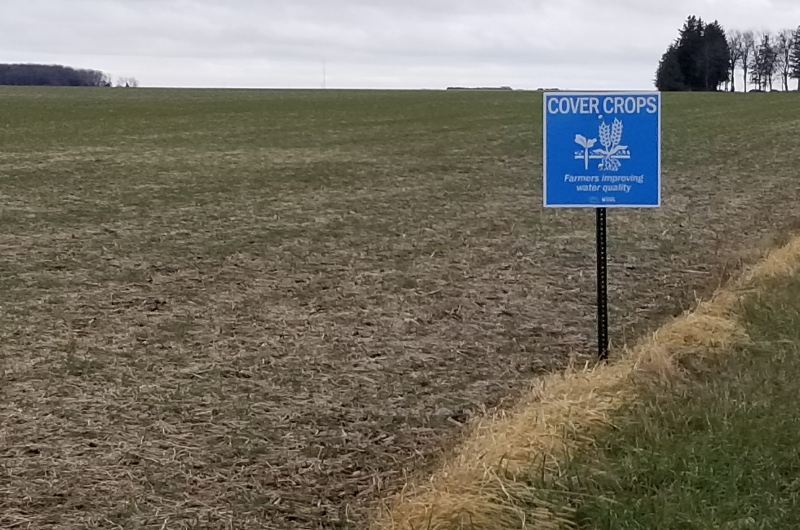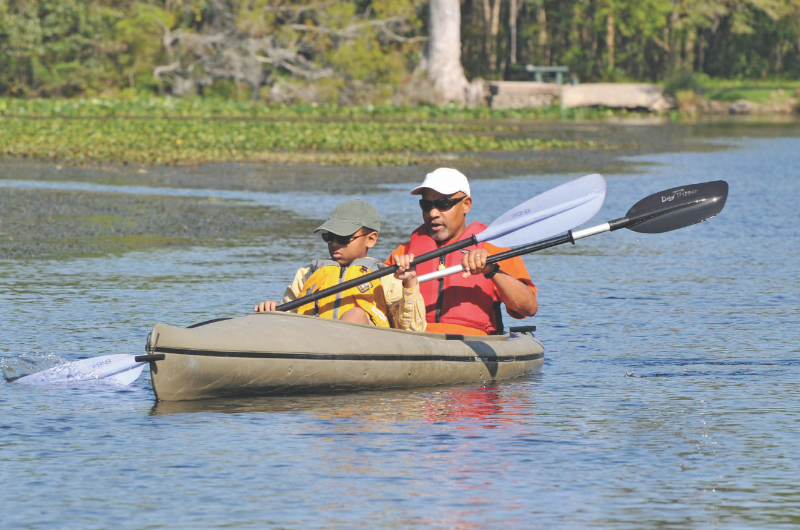Agricultural runoff that harms fish and wildlife has long been a concern for hunters, anglers and conservationists. Water streaming off farmlands can contain excess nutrients, pesticides and antibiotics. Evidence has been mounting that one type of nutrient in the runoff – nitrates – increases the risk of cancer in humans.
While excess nitrate plagues many parts of the Midwest and people who rely on well water, this threat extends well beyond America’s heartland and rural communities. It affects the health of suburban and urban families throughout the United States.
The Izaak Walton League and its chapters across the nation boast a long history of stewardship, policy work and citizen science aimed at reducing water pollution that poses a threat to humans and wildlife.
The problem is big and complex, but one we can’t ignore.
Healthy soil practices, grass buffers along streams and water-filtering wetlands can reduce nitrates and other nutrient pollutants in the water we drink, and the League is committed to promoting those solutions.
Health Risks for Humans
Nutrient pollution isn’t a new problem. For decades, scientists have documented the harm of excess nitrogen and phosphorus in our rivers, lakes and estuaries. It shows up in algal blooms in local reservoirs and in an oxygen-starved “dead zone” where the Mississippi empties nutrient loads into the Gulf of Mexico.
While nitrates occur naturally in water, soil and certain foods, doctors have long known that excess nitrogen can harm bottle-fed infants when water is used in milk formula. Too much nitrogen can result in infant methemoglobinemia, better known as blue-baby syndrome because it lowers the child’s ability to get enough oxygen. The condition can result in a coma or death.
The harm to infants spurred adoption decades ago of a federal limit of 10 milligrams of nitrate per liter in drinking water – which is roughly equivalent to 10 parts per million.
For municipalities and communities, fewer nutrients in the water means less expensive water treatment and healthier people.
In recent years, concerns have grown about the harm of nitrate pollution. A 2015 headline in the Des Moines Register read, “High nitrate levels plague 60 Iowa cities.” Nitrates are often found in groundwater in agricultural regions and can be common in households that use private wells.
A 2018 assessment of more than 30 epidemiologic studies evaluated the health effects of nitrate in drinking water. The review, published in the International Journal of Environmental Resources and Public Health, found a relationship between drinking water nitrate concentrations and colorectal cancer, thyroid disease and neural tube defects. “Many studies observed increased risk with ingestion of water nitrate levels that were below regulatory limits,” the review states.
At the League’s 2019 convention in Des Moines, Dr. David Cwiertny offered insights into this problem during a panel session titled, “How we use the land has consequences: the argument for public health.”
Cwiertny is director of the Center for Health Effects of Environmental Contamination at the University of Iowa. At the convention, he noted that with respect to nitrates, “scientific understanding of health effects is improving at a pace that far exceeds regulatory action.” He said the limits on nitrate in drinking water must be lowered by EPA or by the states.
Cwiertny concluded that “we need to expand our discussion beyond nitrate to include the hazards of and exposure to other byproducts of agricultural intensification – antibiotic resistance, emerging pathogens and pesticides.”
Every watershed is unique. Yet in many waterways, agricultural practices produce most of the nitrates, which means that farmers need to be part of the solution. In a state like Iowa that boasts a large portion of the nation’s best topsoil, generations of intensive farming and decades of chemical use have taken a toll. Many of the natural nutrients are gone.
 As a cover crop, cereal rye on this Iowa farm helps conserve soil and increase organic matter while reducing runoff and nitrates in the water.
As a cover crop, cereal rye on this Iowa farm helps conserve soil and increase organic matter while reducing runoff and nitrates in the water.
Ikes Pursue Solutions
Reducing nitrates in water will take a lot of work and commitments from farmers, policymakers and consumers. The Izaak Walton League has been working on water quality issues since its inception nearly a century ago.
Today, a growing number of farmers understand the positive role that soil health practices can have on both water quality and the bottom line. From an increase in the use of cover crops to a growing acceptance of no-till across the landscape, there is reason for optimism for the future. We simply need to see a lot more farmers integrating such practices into their operations. (Read about the League's work on this in "Soil Matters.")
The League brings together a unique array of champions to tackle the problem including citizen scientists engaged in Save Our Streams (SOS) water monitoring and public awareness campaigns as well as policy advocacy at the state and federal levels.
“The League is re-invigorating and growing a network of volunteer water quality monitors in Iowa and surrounding states,” said Zach Moss, the League’s SOS Coordinator. “Government agencies like Iowa DNR aren’t able to monitor small streams, creeks or drainage ditches regularly like volunteer community scientists can. In the latest monitoring report from 2018, Iowa DNR reported that it only monitored about 53 percent of the state’s lakes and rivers, and of the water bodies that were monitored, only about 23 percent met all water quality standards.
“These volunteers are collecting water quality data to help fill these gaps and help cover Iowa with monitoring sites. This data can inform decision makers, League staff, partner organizations and community members about the health of our watersheds, big and small. That’s important work from a social perspective because you can’t care about something you don’t know or understand. The League is here to help inform our communities about their water resources.”
New Partnerships Are Brewing
Nutrient pollution also takes a toll on boating, fishing and other forms of recreation that provide the backbone of the nation’s $700 billion outdoor recreation economy.
Local breweries that depend on clean drinking water have an obvious stake in the outcome as well.
“Because of the close ties from farm to table in our community and the importance of good water quality in the brewing process, our brewers understand the impact that they are making with purchases and use of agricultural products,” said Kelsey Seay, Interim Director of the Iowa Brewers Guild.
“This is one big part of the sustainability puzzle that many of our members are putting together in their business model. We all need to be aware of how our livelihoods are affecting the soil and water quality, even if we don’t farm ourselves.”
 Kayaking on the Wacissa River in Florida.
Kayaking on the Wacissa River in Florida.
Rewards for Real Action
Big problems require big solutions. A plan to fix a national nutrient pollution problem means reimagining and overhauling our whole system of producing food in the United States, which requires buy-in and action at every level, from local to federal. This would require serious investments and incentives for conservation practices.
But those investments will provide dividends. Using less nitrogen, pesticides and fuel lowers costs. Some farmers are harvesting profits from their commitments to sustainable agriculture.
For municipalities and communities, fewer nutrients in the water means less expensive water treatment and healthier people. Healthy rivers and streams also provide both intangible and economic benefits as they offer safe places for fishing and all the outdoor recreation that clean water affords.
Achieving these improvements will require hard work ahead and serious commitments from many quarters. That work is well underway at the League, but we need to ramp it up dramatically – not only in America’s heartland, but across the U.S. League members and the thousands of citizen scientists we support will play an essential role.
Learn more about our work for sustainable agriculture